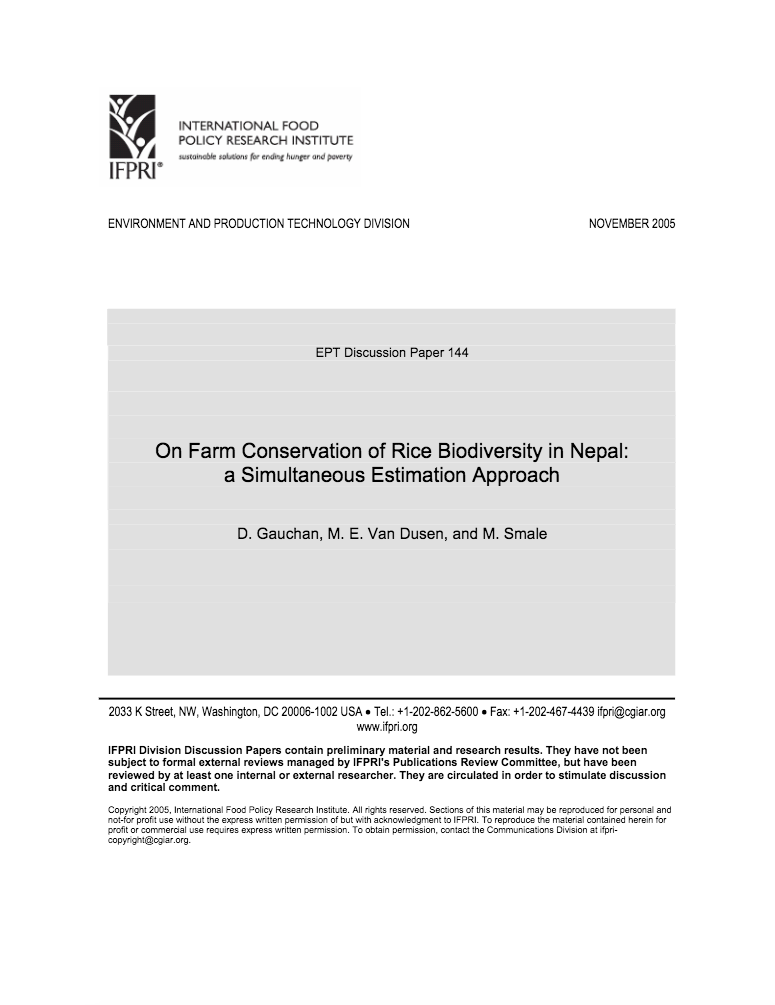On farm conservation of rice biodiversity in Nepal: a simultaneous estimation approach
"This paper presents an empirical case study about farmer management of rice genetic resources in two communities of Nepal, drawing on interdisciplinary, participatory research that involved farmers, rice geneticists, and social scientists. The decision-making process of farm households is modeled and estimated in order to provide information for the design of community-based conservation programs.










